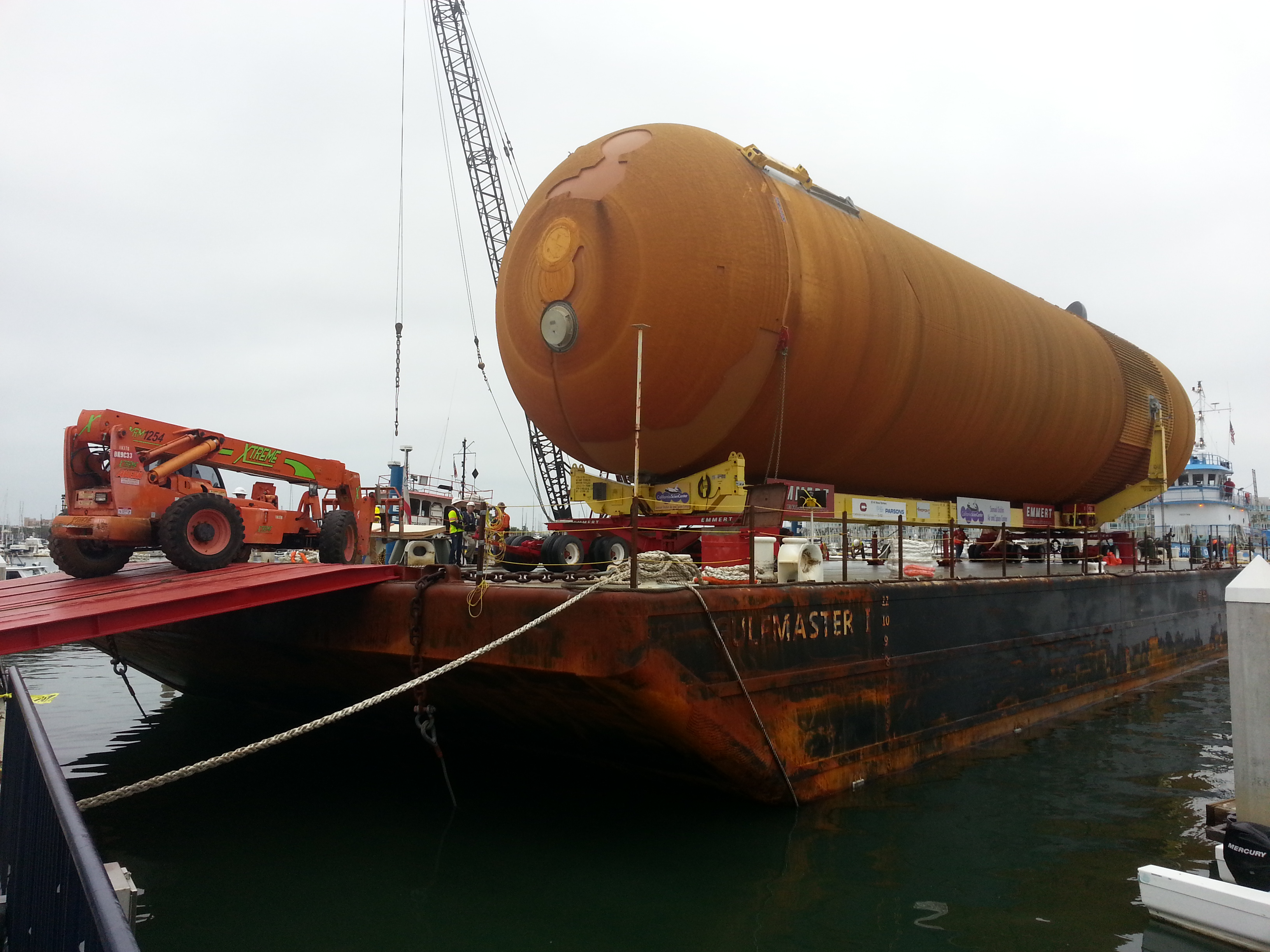
MARINA DEL REY, California — The gentle maritime rhythm of Fisherman's Village in Los Angeles was punctuated by the sounds of torqueing metal and snapping timber Wednesday (May 18), as NASA's last space shuttle external fuel tank was rolled off a seagoing barge.
The tank will soon begin the final leg of a 5,000-mile (8,000 kilometers) journey from New Orleans to its destination at the California Science Center (CSC) near downtown Los Angeles.
The slow offload was uneventful, but the tank's long voyage to California was anything but. Upon leaving NASA's Michoud Assembly Facility in Louisiana, the 65,000-lb. (29,500 kilograms) fuel tank traversed stormy seas in the Gulf of Mexico, transited the Panama Canal and stopped en route to rescue the crew of a stricken fishing vessel, all before its final crawl up the California coast. [See photos of the external tank's LA arrival]
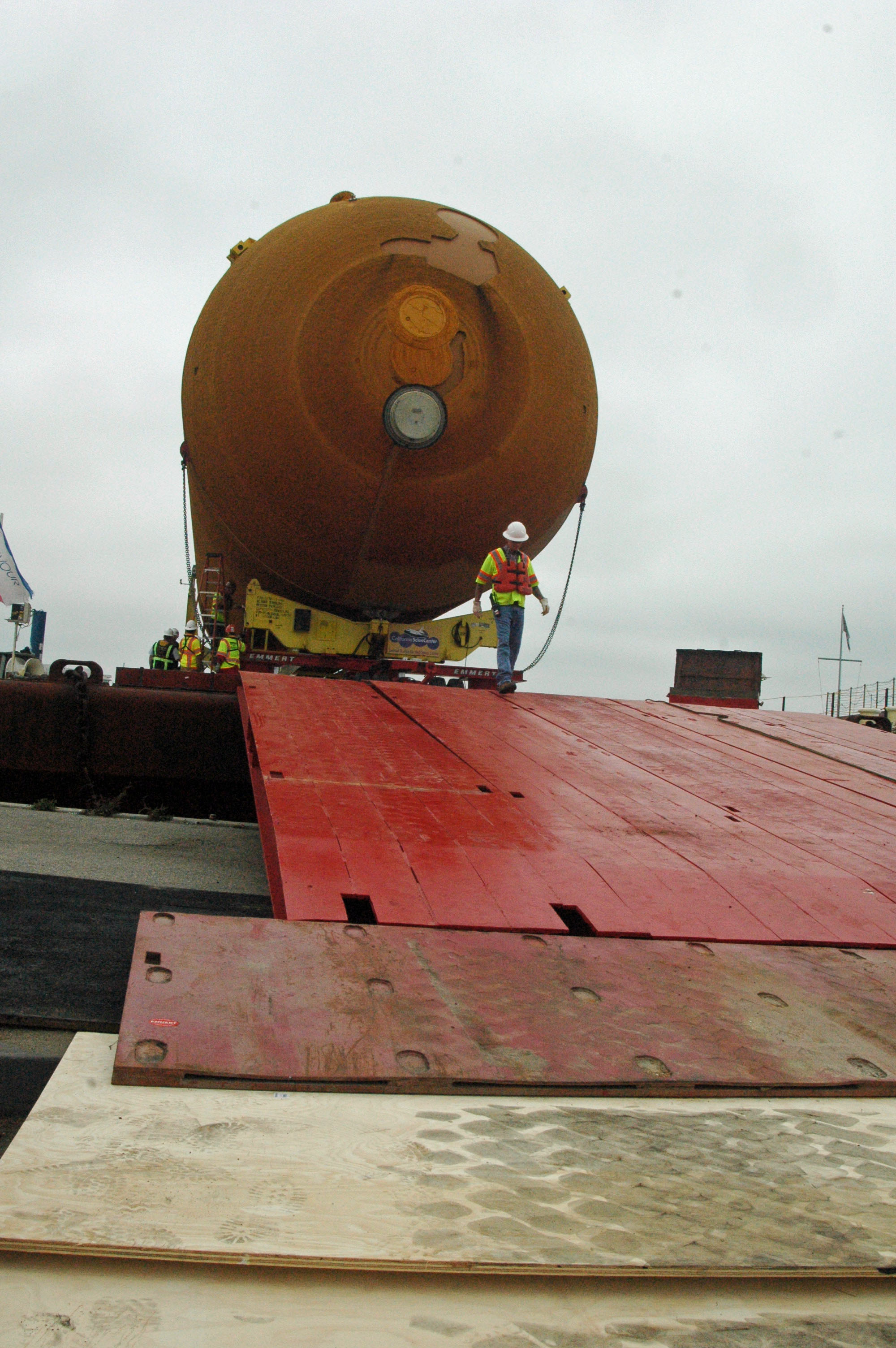
The 154-by-27.5-foot (47 by 14.5 meters) behemoth, called ET-94 by NASA, crossed the breakwater outside Marina Del Rey at 6 a.m. local Pacific time (9 a.m. EDT; 1300 GMT) on Wednesday, its ruddy-orange insulation a bright contrast to the characteristically overcast, gray skies of the Southern California coast in May.
Within 2 hours, ET-94 was tied up at the dock, surrounded by tugboats, law enforcement personnel and volunteers from the CSC. It took another 2 hours for workers from the transport contractor, Emmert International, to prepare the tank to be towed from its well-secured berth on the barge to the shore by a large diesel truck.
A few hundred Angelenos turned out to watch the spectacle from a safe distance. They were soon rewarded by slow progress onto the shore, during which the huge aluminum alloy tank gave off echoing groans and pops as it traversed the incline off the barge. Workers moved quickly from spot to spot during the slow traverse, making sure that everything was proceeding as planned. The wooden ramp was noisily reduced to a cracked mass of kindling by the time the heavy load cleared it, as expected.
The giant tank will languish at the docks until midnight local time on Saturday (May 21), when it will begin its final 16.5-mile (26.6 km) trek to the CSC. Following a similar route to that taken by the space shuttle Endeavour, which journeyed from Los Angeles International Airport to the museum in 2012, ET-94's cross-city drive is expected to generate far less drama, lasting only about 18 hours instead of the three days it took to move the orbiter.
Get the Space.com Newsletter
Breaking space news, the latest updates on rocket launches, skywatching events and more!
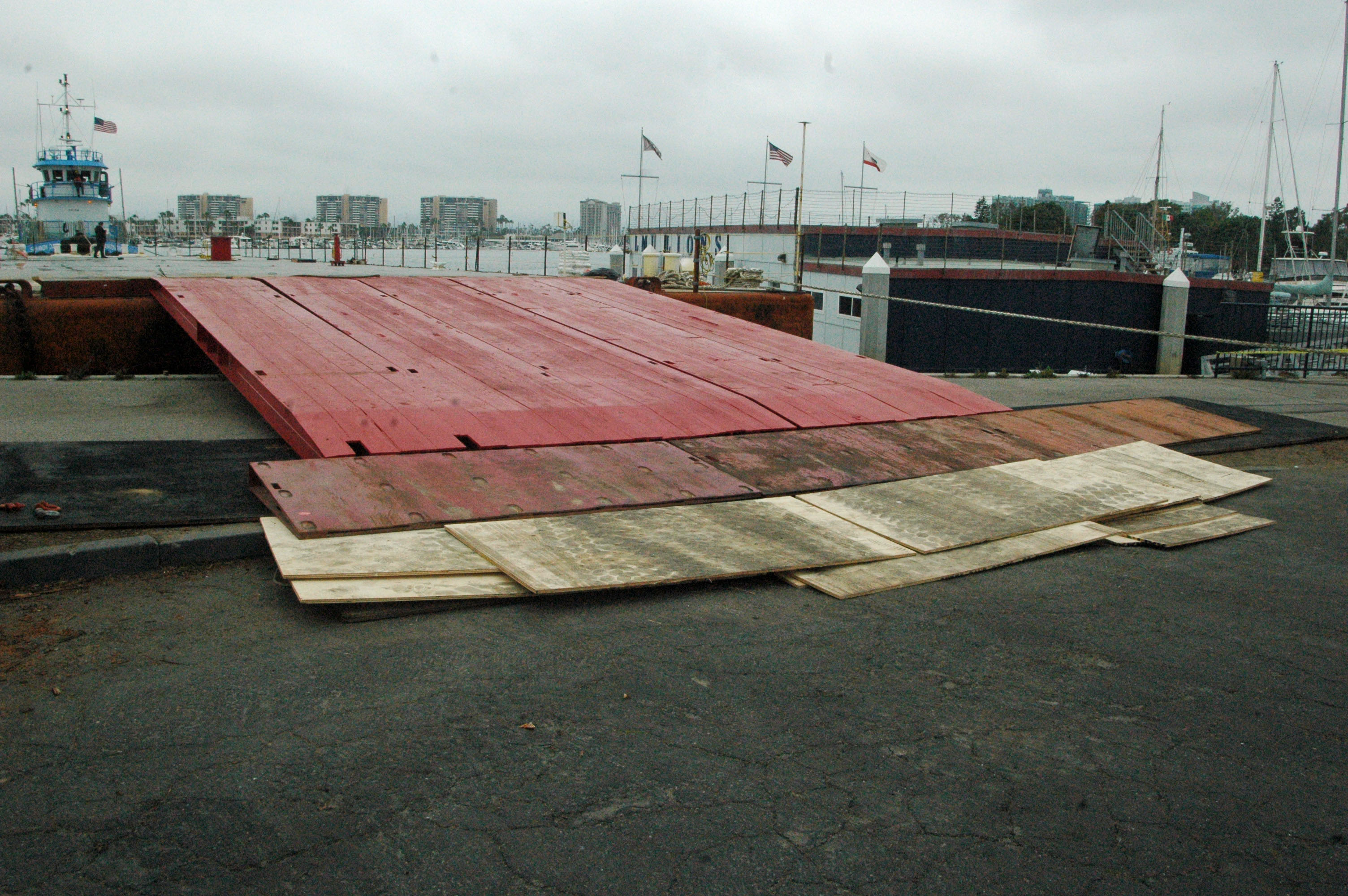
"ET-94 will soon head down the 90 freeway — yes, it will go on the freeway — then onto Westchester Parkway, through Inglewood, past the world-famous Forum, then north on Vermont Avenue to the museum," said LA Mayor Eric Garcetti. "Though it's only half the weight of Endeavour, at 150 feet, it's longer." [Space Shuttle Endeavour Soars Over California Landmarks (Video)]
The move is expected to proceed at a walking pace, except for the turns the tank must make, which will be slowed due to its enormous length.
When asked about possible challenges along the route, such as those that caused Endeavour to get stalled at one LA intersection overnight, Garcetti was optimistic.
"The ET is easier to maneuver, and while there will be some tree trimming, none will have to be removed this time. It is three stories high, however, so some traffic lights and power lines will need to be relocated, but will be put back as soon as we're done. You'll still be able to watch 'Game of Thrones,'" he quipped.
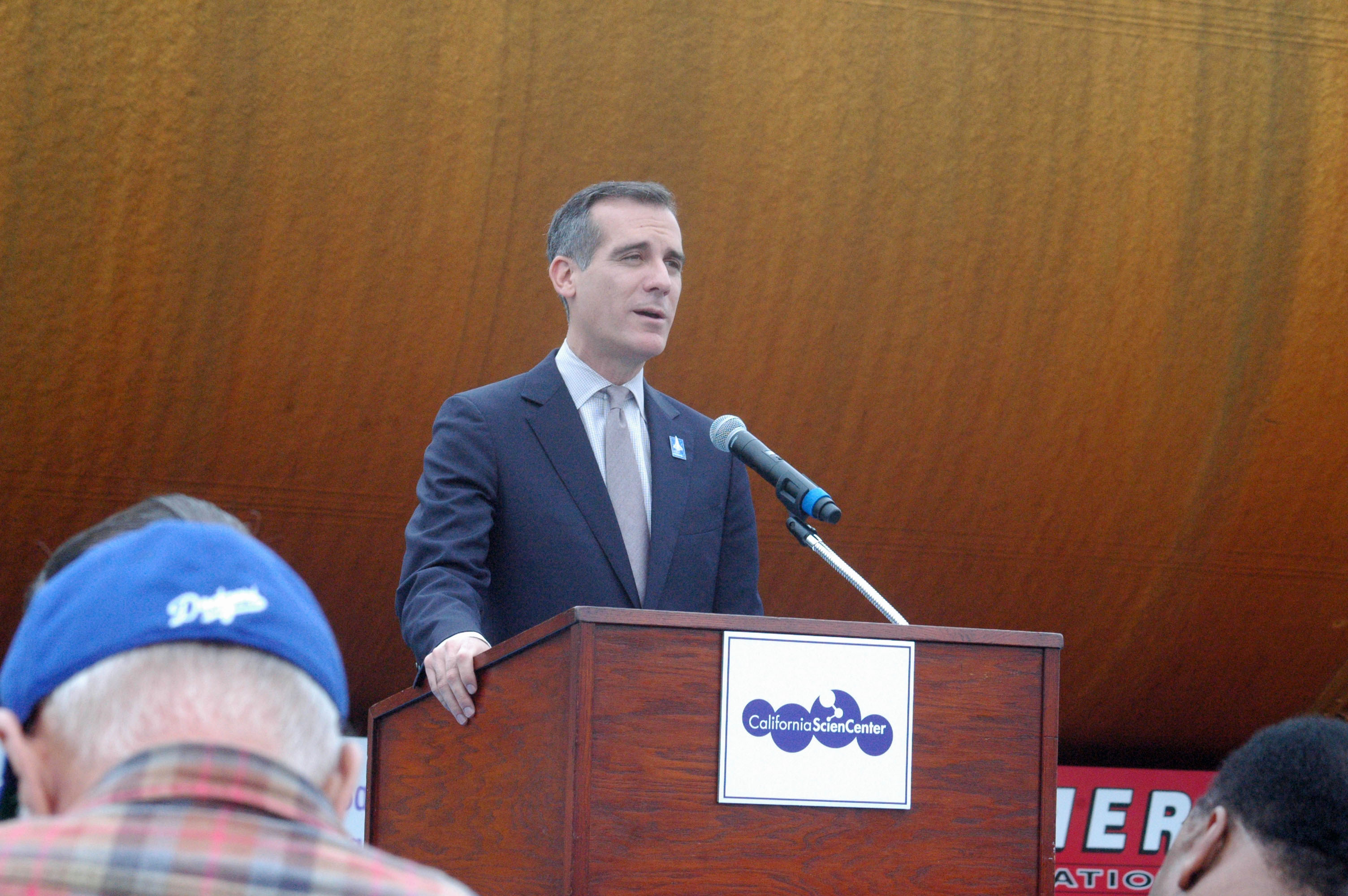
This is NASA's last external tank, and was originally built alongside the one that launched the ill-fated shuttle Columbia on its final flight in 2003. Columbia broke up during re-entry to Earth's atmosphere due to a damaged wing, the result of being hit by insulating foam falling from its external tank during launch. ET-94 was the the last of that tank batch, and it was pulled aside for foam integrity tests during the Columbia investigation and never flown. ET-94's remaining foam insulation is scarred where patches of it were removed during the tests.
The external tank was the only component of the shuttle system that was not reused. After the solid rocket boosters fell away and parachuted into the Atlantic (where they were recovered and refurbished), the ET helped the shuttle orbiter get to space, and was then detached to burn up upon re-entry.
The arrival of the pumpkin-colored tank on Wednesday was inspiring to many bystanders. Among them was Gil Garcetti, father of the LA mayor and the former district attorney of Los Angeles. He is also a photographer of note, having published a number of art books, and was there to visually chronicle the events.
"This new shuttle display will energize the entire LA region," Gil Garcetti said. "When you see kids here, their eyes are opened up wide. Many are thinking, ‘This is all about astronauts; maybe I can do something like that someday!' And it inspires people my age, too — it's just fabulous. It was the result of people with the brains, the knowledge, the fortitude and the foresight to make this kind of technological advancement possible. Just getting it here was a huge challenge, and I'm glad I could be here to see it today."
Elsewhere in the crowd, Eric Danryd watched the spectacle with his mother. Danryd, 24, remembers only the final years of the space shuttle era, but they left a strong impression.
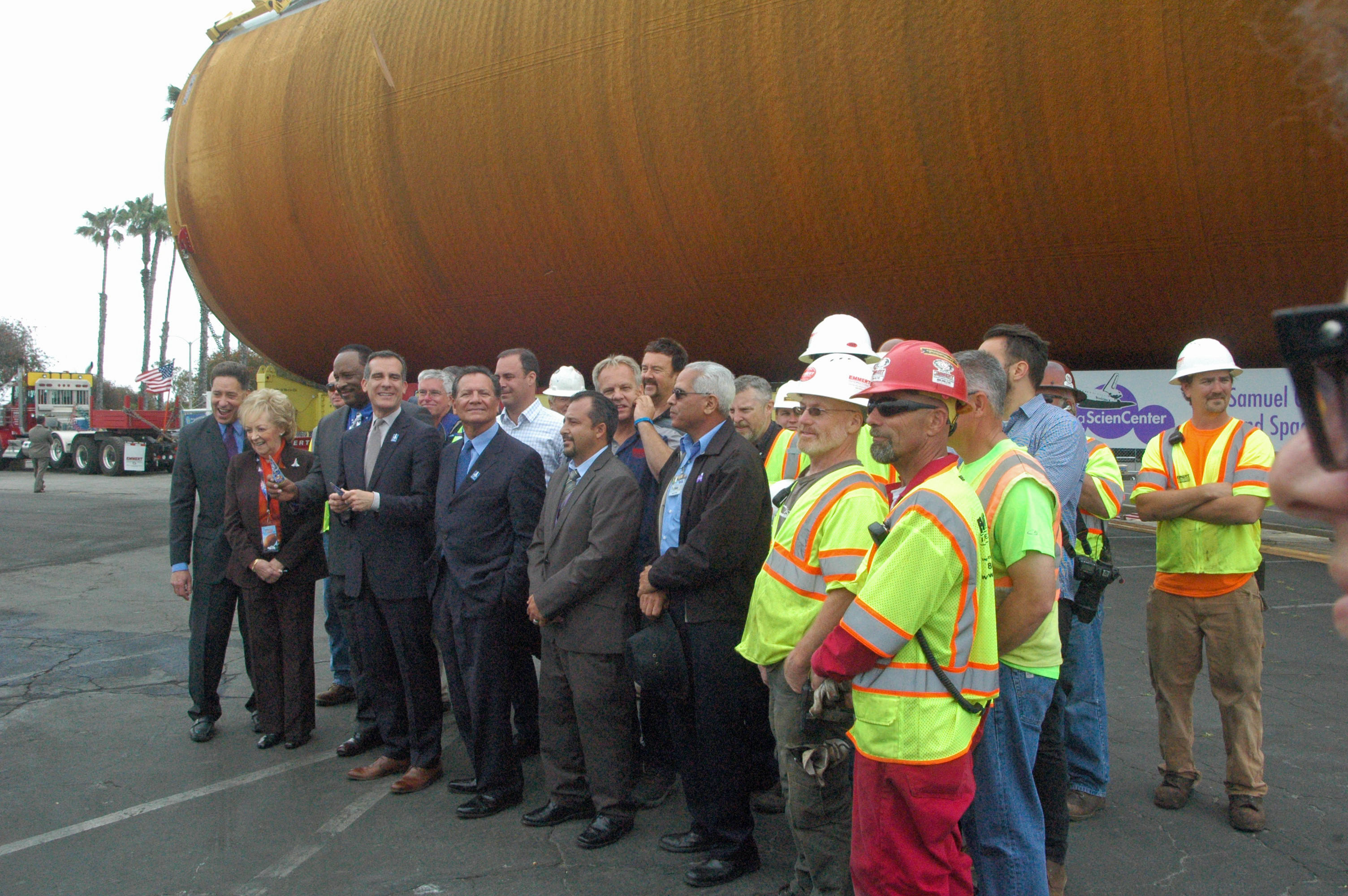
"The shuttle was such a big deal when I was growing up; seeing shuttles launch was a big part of my childhood," he said. "I saw the Endeavour when it flew into LA, and that was just an amazing sight. When I heard this was coming in by boat, I just had to see it. Watching this come in to Los Angeles today is like the cherry on top for me."
When ET-94 completes its cross-town journey this weekend, it will be housed in a temporary structure at the CSC until the final exhibit hall is completed in about three years. Then the shuttle Endeavour, two solid rocket boosters and ET-94 will be mated in launch configuration in the new pavilion, rising 184 feet (56 m) above the spectators below. About 9 million people have visited Endeavor in its temporary shed since it arrived in LA, and attendance estimates for the completed exhibit, to open in 2020 or thereabouts, are much larger.
"Endeavor's permanent exhibit at the CSC will be the only one of its kind in the world," said Linda Oschin, widow of Samuel Oschin, a principal donor to the museum. "Seen upright, on a simulated launch pad, it will be an incredible inspiration for everyone, especially kids. This exhibit will honor my husband's legacy forever, to look up, never give up and to reach for the stars."
Follow us @Spacedotcom, Facebook or Google+. Originally published on Space.com.
Join our Space Forums to keep talking space on the latest missions, night sky and more! And if you have a news tip, correction or comment, let us know at: community@space.com.
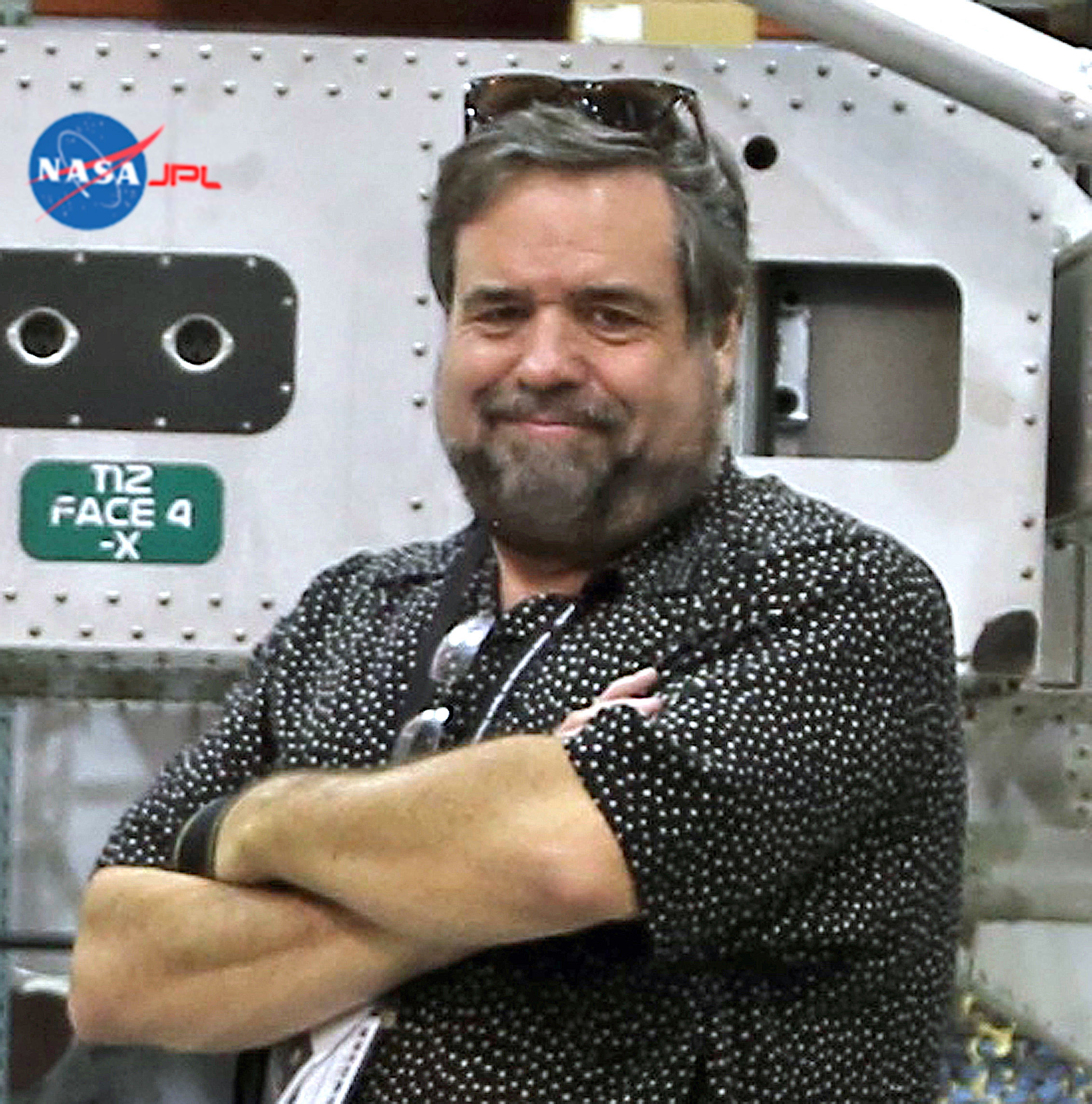
Rod Pyle is an author, journalist, television producer and editor in chief of Ad Astra magazine for the National Space Society. He has written 18 books on space history, exploration and development, including "Space 2.0," "First on the Moon" and "Innovation the NASA Way." He has written for NASA’s Jet Propulsion Laboratory, Caltech, WIRED, Popular Science, Space.com, Live Science, the World Economic Forum and the Library of Congress. Rod co-authored the "Apollo Leadership Experience" for NASA's Johnson Space Center and has produced, directed and written for The History Channel, Discovery Networks and Disney.









